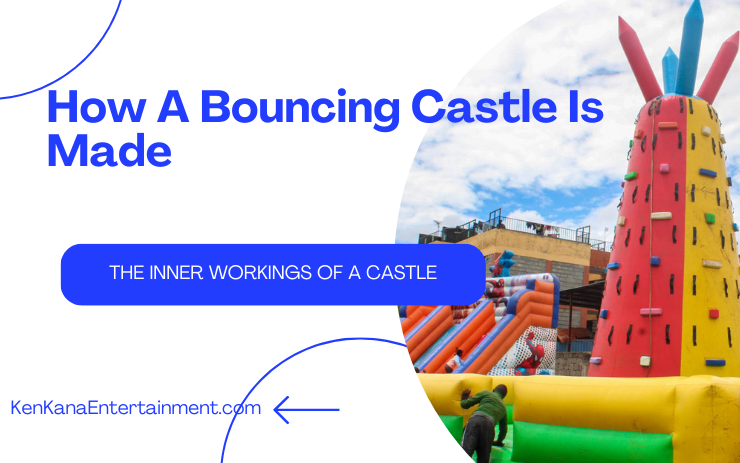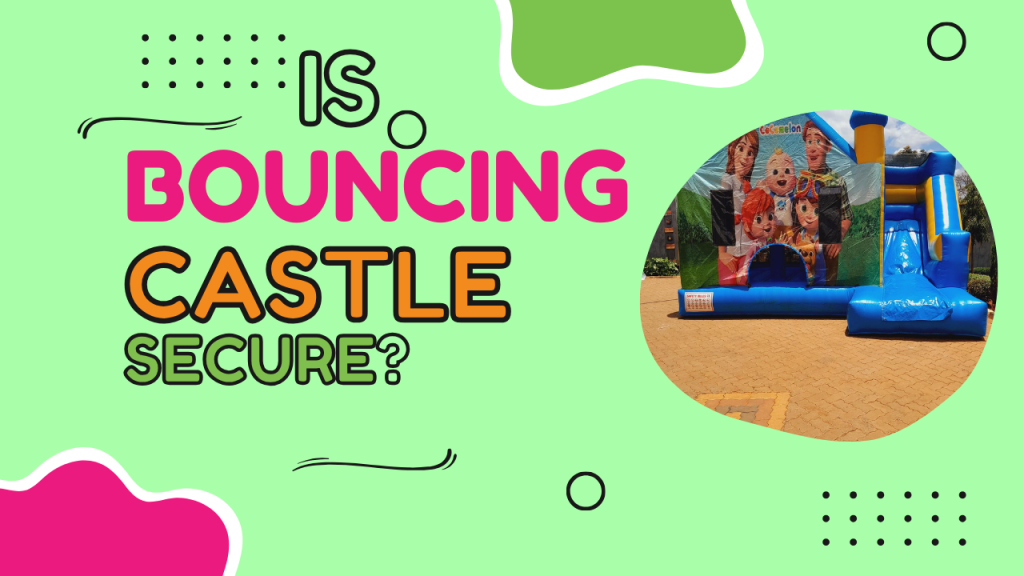Have you ever wondered how those colorful, inflatable wonders that bring immense joy to children at parties and events are made?
Bouncing castles, also known as inflatable bounce houses, are a staple of entertainment, captivating the hearts of kids and even adults.
In this article, we’ll take you through the fascinating journey of how a bouncing castle is made, from design to the final product.
So, buckle up and get ready to dive into the world of inflatable fun!
Table of Contents
Introduction
The allure of a bouncing castle lies in its ability to transform any gathering into a magical playground for children.
These inflatable structures come in a variety of sizes, shapes, and themes, ensuring there’s something for every occasion.
Design and Conceptualization
The journey begins with a creative spark.
Expert designers brainstorm ideas for new bouncing castle designs, drawing inspiration from popular characters, animals, and fantasy worlds.
Once the concept is finalized, detailed blueprints are drafted, outlining dimensions, features, and safety elements.
Selection of Materials
The choice of materials is critical to the durability and safety of the bouncing castle.
High-quality PVC vinyl is commonly used due to its strength and flexibility.
The material undergoes rigorous testing to ensure it can withstand the rigors of jumping, bouncing, and playful adventures.
Cutting and Stitching the Fabric
The blueprint serves as a roadmap for cutting the PVC vinyl into panels, which are then meticulously stitched together using industrial-grade sewing machines.
Reinforced stitching and double layers are often employed in high-stress areas to enhance the castle’s structural integrity.
Inflation Tube and Air Distribution
Every bouncing castle features an inflation tube, allowing for rapid inflation and deflation.
A powerful blower constantly pumps air into the structure during use, maintaining its firmness.
Internal air distribution ensures even pressure, preventing sagging or uneven surfaces.
Adding Safety Features
Safety is paramount in bouncing castle production.
Entrances and exits are designed with safety nets and soft barriers to prevent accidental falls.
Anchor points and sturdy tie-downs keep the castle securely in place, even during enthusiastic play.
Quality Control Checks
Before proceeding further, each bouncing castle undergoes meticulous quality control assessments.
Technicians inspect the stitching, inflation, and safety features to ensure they meet industry standards.
Artwork and Theme Incorporation
The bouncing castle comes to life with vibrant artwork and themed decorations.
Using weather-resistant ink, skilled artists bring the design to the surface, transforming the castle into a visually captivating masterpiece.
Final Testing and Inspection
In this crucial phase, the fully assembled bouncing castle is inflated and thoroughly tested.
Pressure levels, anchor points, and safety features are rigorously examined to certify that the product is ready for use.
Packing and Distribution
Once approved, the bouncing castle is carefully deflated, folded, and packaged.
Efficient packaging minimizes space during transportation, reducing environmental impact and logistical costs.
Setting Up the Bouncing Castle
Setting up a bouncing castle is a straightforward process.
The deflated castle is laid out, connected to the blower, and inflated.
Anchor points are secured to the ground, and within minutes, the vibrant play area stands ready for fun.
Maintenance and Longevity
Regular maintenance is crucial for the longevity of a bouncing castle.
Cleaning, inspections, and minor repairs ensure that the castle remains safe and appealing for countless events.
Ensuring Safety During Use
While bouncing castles offer endless entertainment, safety precautions are essential.
Adults should supervise children at all times, and guidelines for the maximum number of occupants should be strictly followed.
Environmental Considerations
Manufacturers are increasingly adopting eco-friendly practices.
Materials are being sourced responsibly, and efforts are made to extend the lifespan of bouncing castles, reducing waste in landfills.
Conclusion
The journey of crafting a bouncing castle involves creativity, precision, and a commitment to safety.
From the initial design to the final inspection, each step contributes to the joy and laughter that bouncing castles bring to children’s lives.
So next time you see a bouncing castle, you’ll have a newfound appreciation for the craftsmanship and dedication that make these inflatable wonders possible.
FAQs
Q1: How long does it take to set up a bouncing castle? A: Depending on size and conditions, it usually takes around 15-30 minutes to fully inflate and secure a bouncing castle.
Q2: Are bouncing castles suitable for all age groups? A: Bouncing castles are primarily designed for children, but some larger models can accommodate adults as well.
Q3: Can I customize the design of a bouncing castle? A: Many manufacturers offer customization options, allowing you to tailor the design and theme to your preferences.
Q4: Are bouncing castles safe for use during bad weather? A: It is recommended to avoid using bouncing castles during adverse weather conditions, such as strong winds or heavy rain.
Q5: How can I ensure the cleanliness of a bouncing castle? A: Regular cleaning and maintenance are important. Many manufacturers provide guidelines for cleaning and care.







